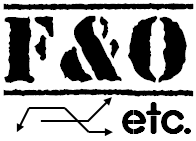|
|
Now that we have seen the How to trade a short call? and the Reasons & Benefits of Short Call Option Trading, it's time to look at the Profit and Loss calculations for short call option trading.
Consider the same payoff function graph for a short call option position which we took in first article. Here it is:

This person has shorted or sold a call option on Microsoft for $5, with a strike price of exercise price of $30. Hence, all his profit and loss calculations will be made with respect to these 2 values.
As you can see, the profit potential is limited or capped - that is indicated by the horizontal line of the RED graph, which stretches from 0 to $30 i.e. the strike price. The conclusion is simple - if the underlying price i.e. of microsoft stock, remains below $30, this person will make a flat $5 profit. The option will not be exercised by the buyer and the seller will get to keep the entire $5 that he got while selling the option, and that becomes his profit.
What is the underlying microsoft stock price ends above $30 but below $35?
From $30 and above, the profit (or loss) starts to take a linear movement in the downward direction. One important thing to note here is that the moment the underlying price goes above strike price of $30, the option becomes exercisable. Hence, above $30, the buyer can exercise the option and the seller will have to pay the buyer the difference between the underlying stock price and the strike price, if the stock price goes above $30.
For e.g., if the underlying price is at $33, then seller needs to pay the buyer $33 - $30 = $3.
if the underlying price goes upto $48, then seller needs to pay the buyer $48 - $30 = $18.
So how to calculate profit and loss for this situation in short call option trading?
You must note that the seller of the call option had initially received the option price of $5. Hence, to come to a net profit and loss value, one must account for the sell price of $5.
From the point of view of seller, he received $5.
Taking the two cases mentioned above, if the underlying price is at $33, then seller needs to pay the buyer $33 - $30 = $3. So net profit for seller will be $5 - $3 = $2.
If the underlying price goes upto $48, then seller needs to pay the buyer $48 - $30 = $18. Net loss to the seller will be $5 - $18 = $13 loss.
Similarly, one can carry on checking the various profit and loss values and will find that they fit exactly on the RED graph.
However, one must also account for brokerage and commission paid on these option trades. They vary from broker to broker and are net loss for both the seller and the buyer as it is a cost. One must account for that as well while making the P&L calculations for options trading

0 Comments: Post your Comments
Wish you all profitable derivatives trading and investing activities with safety! = = Post a Comment